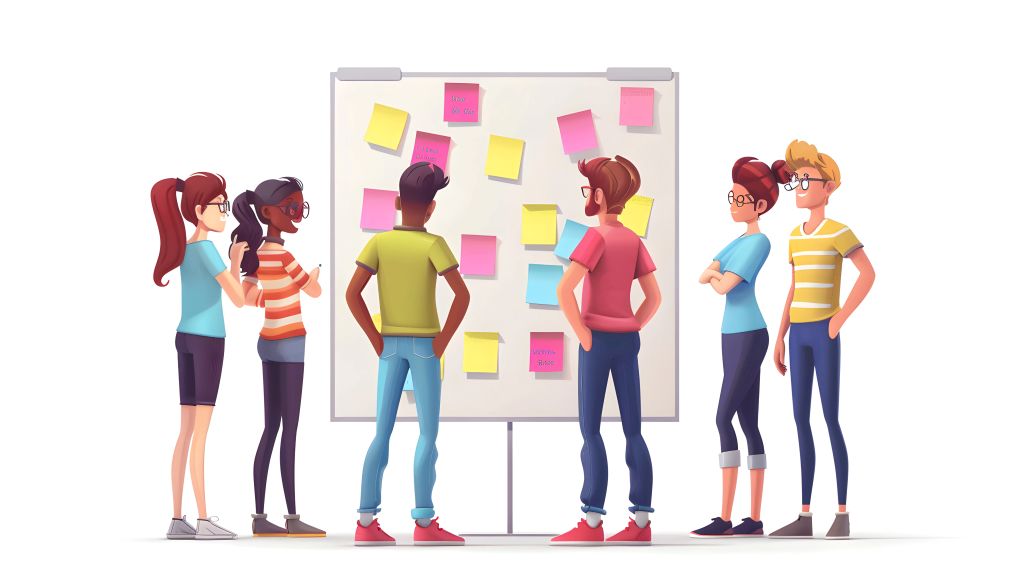What if the most critical workplace skill of the next five years isn’t a buzzword—but a mindset?
According to the World Economic Forum’s Future of Jobs Report 2025, Analytical Thinking and Creative Thinking are now ranked among the top growing skills—both directly linked to strong problem-solving abilities. Meanwhile, the 2025 Global Human Capital Trends from Deloitte reveal that 66% of managers believe recent hires aren’t fully prepared for their roles—often due to lack of experience
That gap is exactly why organizations in 2025 are making problem solving training a central part of Learning & Development strategies.
Why Problem Solving Training Matters in 2025
Problem solving empowers employees to think critically, adapt to change, and develop innovative solutions—skills essential for future-ready teams. For HR and L&D leaders, building problem solving based learning pathways ensures teams are future-ready and agile in a competitive business environment.

Additional reasons it matters:
Improves decision-making: Employees learn to evaluate options quickly and choose effective solutions.
Reduces operational risks: Structured problem solving minimizes recurring errors.
Enhances employee confidence: Employees feel empowered to tackle complex challenges independently.
Supports innovation: Drives new ideas, processes, and solutions.
Fosters collaboration: Teams share knowledge and tackle problems together.
Aligns with business goals: Ensures problem solving directly contributes to measurable ROI.
Problem Solving Based Learning: Moving Beyond Content
Traditional training delivers knowledge but doesn’t guarantee application. Problem solving in learning flips the model—employees actively practice scenarios, role-plays, and simulations that mimic real challenges.
Benefits of problem-solving based learning:
Encourages active participation and engagement
Helps employees retain and apply knowledge faster
Prepares teams for unexpected, complex challenges
Strengthens collaboration and communication
Boosts critical thinking skills
Aligns with business outcomes and ROI
8 Steps to Problem Solving Every Employee Should Know
A structured problem-solving framework ensures consistency across teams, reduces errors, and builds confidence. When embedded in problem solving skills training, employees can tackle challenges efficiently and creatively. Here’s a closer look at each step:
Define the problem clearly
Begin by articulating the problem in simple, specific terms. Avoid assumptions and focus on the core issue. For example, instead of saying, “Sales are low,” define it as “Sales for Product X have dropped 15% in the last quarter compared to projections.” Clear problem definition aligns the team and sets a precise goal for solutions.
Gather relevant information
Collect all necessary data, insights, and stakeholder perspectives. This may include market trends, customer feedback, and internal performance metrics. The goal is to build a comprehensive understanding of the problem, reducing guesswork and improving decision-making.
Analyze root causes
Look beyond surface symptoms to identify what is truly driving the issue. Use techniques like the 5 Whys, cause-and-effect diagrams, or process mapping. Root cause analysis ensures solutions address the underlying problem rather than just its effects.
Generate multiple solutions
Encourage creativity and diverse thinking. Brainstorm a wide range of possible solutions, including unconventional approaches. The more options available, the better the chances of identifying a solution that is innovative, effective, and feasible.
Evaluate and compare solutions
Assess each option against criteria such as cost, impact, time to implement, and alignment with organizational goals. Involving multiple perspectives during evaluation increases the likelihood of selecting the most balanced and effective solution.
Choose the best option
Make a decisive choice based on the evaluation. Clearly communicate the decision to all stakeholders and explain why it was selected. This transparency ensures team buy-in and reduces resistance during implementation.
Implement the solution
Execute the chosen solution with a clear plan, assigning roles, responsibilities, and timelines. Monitor the implementation closely, address obstacles proactively, and ensure everyone involved understands their contribution.
Monitor and review results
After implementation, measure outcomes against expectations. Collect feedback, analyze results, and identify lessons learned. Continuous monitoring and review transform problem solving into a dynamic learning process, helping teams improve over time.
Why this framework works in training:
Builds confidence in decision-making
Encourages structured thinking under pressure
Promotes collaboration and communication across teams
Supports innovation by combining analysis with creativity
Aligns solutions with business goals and measurable outcomes
By practicing these eight steps through structured training and real-world simulations, employees turn problem solving into a strategic skill, not just a reactive task. Teams become more agile, innovative, and capable of handling challenges efficiently, which ultimately drives business growth and resilience.
Embedding Problem Solving in Learning & Development
Organizations are moving from one-size-fits-all training to adaptive, skills-focused learning—employees don’t just learn, they apply knowledge in ways that drive real business outcomes.
Training that combines practical exercises, scenario-based learning, and personalized feedback allows employees to develop problem-solving abilities that are immediately transferable to the workplace. Creativity and critical thinking thrive when learning is hands-on and connected to real challenges, not just theoretical concepts.
With Calibr’s integrated ecosystem — Learn, Craft, and Content Hub — HR and L&D leaders can:
Deliver personalized, AI-powered learning journeys that adapt to each employee’s skill gaps and pace, ensuring every learner gets what they need to grow.
Create real-world simulations where teams can safely test solutions, experiment with different approaches, and learn from mistakes without risk to operations.
Track skill adoption and business outcomes using analytics dashboards, giving leaders visibility into how learning translates into performance improvements.
Access global, high-quality content to support continuous learning, including curated resources, expert insights, and interactive modules.
Scale learning programs efficiently with AI-enabled course authoring, so training can be rolled out quickly across departments or geographies.
Together, these tools ensure that problem solving becomes second nature, empowering employees to transform creative ideas into practical, measurable impact. By integrating personalized, interactive, and analytics-driven learning, organizations can foster a workforce that is confident, innovative, and ready to tackle complex challenges—today and in the future.
Creative Problem Solving Training: Unlocking Innovation

Here’s why creative problem-solving matters in training programs:
Drives out-of-the-box thinking: Employees learn to challenge assumptions and explore unconventional solutions. For example, a product team tasked with designing a new feature under tight constraints can identify unique approaches that might not surface in traditional brainstorming.
Encourages experimentation: Simulations, prototyping, and “fail-fast” approaches let teams test ideas safely. Imagine a customer service team practicing responses to complex client scenarios in a simulated environment. They can experiment, learn from mistakes, and refine strategies without affecting real customers.
Connects diverse perspectives: Cross-functional workshops bring together different viewpoints, sparking richer ideas. Marketing, engineering, and operations staff collaborating on a process improvement project can combine expertise to uncover solutions a single department might miss.
Boosts adaptability: Employees become better prepared to handle change, uncertainty, and unexpected challenges. A logistics team facing sudden supply chain disruptions can quickly develop alternative routing plans, minimizing delays.
Links creativity to business impact: Training emphasizes not just idea generation but applying creative solutions to achieve measurable outcomes. For instance, a sales team might design a new customer engagement approach that increases conversion rates, showing a direct connection between creative problem solving and business results.
By integrating these scenarios into training programs, organizations turn creative thinking into actionable problem solving, enabling employees to tackle challenges effectively and drive long-term innovation and growth.
Measuring and Sustaining Problem Solving Skills
Training is only effective if the skills employees acquire are measured, reinforced, and consistently applied in real work scenarios. Without follow-up and integration into daily workflows, even the best problem solving training risks being forgotten.
Sustaining these skills ensures long-term innovation, higher productivity, and measurable performance improvement across teams and the organization.
Key strategies for sustaining problem solving skills:
Use analytics dashboards: Track not only course completion but also how employees apply problem solving in real-world projects. This data helps L&D leaders identify gaps, adjust training, and measure ROI.
Collect regular feedback: Encourage employees to share experiences and challenges they faced while applying problem solving skills. Peer discussions, surveys, and post-training reflections deepen learning and reinforce behavioral change.
Integrate into performance reviews: Recognize and reward employees demonstrating strong problem-solving abilities. Linking training outcomes to performance evaluations reinforces the value of these skills in career progression.
Offer ongoing microlearning: Reinforce key concepts with short, focused modules, simulations, or exercises. Microlearning keeps skills sharp and encourages employees to experiment with new approaches in low-risk environments.
Promote a problem-solving culture: Encourage experimentation, collaboration, and cross-functional teamwork. When employees feel safe to test ideas and learn from failures, innovation naturally flourishes.
Link to measurable outcomes: Show tangible results, such as faster project completion, reduced errors, or increased innovation metrics. Connecting problem solving to business impact motivates teams and demonstrates the value of training.
Provide mentorship and coaching: Pair less experienced employees with mentors to guide problem solving in complex scenarios, helping them internalize frameworks and best practices.
Create communities of practice: Facilitate regular workshops or forums where employees share solutions, discuss challenges, and collaborate on problem-solving initiatives. This builds organizational knowledge and accelerates skill adoption.
By embedding these strategies into the learning ecosystem, organizations ensure that problem solving isn’t just a one-time skill acquisition but a continuous capability that drives innovation, adaptability, and measurable business results over time.
Final Thoughts
In 2025, problem solving training isn’t optional—it’s a critical investment in organizational resilience. Companies that embed problem-solving into learning pathways build workforces that are confident, creative, and ready to tackle the complex challenges of a rapidly changing business landscape.
With platforms like Calibr, organizations can turn everyday learning into practical problem solving, helping teams apply skills immediately and drive measurable outcomes—experience this firsthand with a 14-day free trial to see how Calibr transforms learning into actionable problem solving for your teams.
By fostering a culture where problem solving is an integral part of learning, organizations enable employees to identify opportunities, anticipate challenges, and respond effectively to change. Teams become more agile, confident, and empowered to generate innovative solutions, leading to improved business outcomes, higher engagement, and stronger competitive advantage.
Those who prioritize problem solving training today won’t just solve tomorrow’s challenges—they’ll transform them into opportunities for growth and innovation, ensuring their workforce remains resilient, adaptable, and strategically prepared for whatever the future holds.


